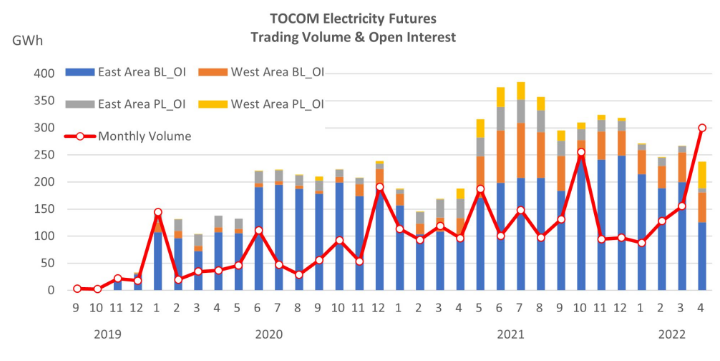TOCOM Energy
Refining margins plunge as distillate cracks hit multi-month lows
Recent crude oil market was characterized by an exacerbated market volatility with oil prices dominated by heightened geopolitical tensions.
JPX Dubai crude oil prices jumped 3% on Friday in reaction to reports that explosions had occurred in Iran, sparking concerns that Middle East oil supply could be disrupted. The risk of tensions escalating further still remains high, especially if the Israeli retaliation is severe, and could drive prices north of the current range.
Elsewhere in the physical market, the prompt futures spreads continue to be backwardated, with prompt time spreads in the JPX Dubai futures market supported by OPEC supply cuts, but lacklustre margins provided headwinds.
Refinery margins weakened globally, with Singapore cracking margins dipped below $3 a barrel last week, down from a peak of about $13/bbl in February, while European cracking margins contracted to about $12/bbl from a peak of $ 20 a barrel this year.
This downward trend of cracking margin is dominated by diesel cracks. High imports and weak local demand are pressuring European diesel crack spreads. European diesel refining margins hit fresh nine-month lows this week. In Asian market, the influx of diesel imports from China and South Korea has contributed to a substantial buildup of Singapore’s middle distillate stocks, which includes diesel and kerosene, currently at their highest levels in over 2.5 years.
Decades-low global demand also adds to diesel’s woes, this is in line with IEA’s tepid assessment of demand by lowering its growth outlook for the year by 130000 barrels per day to 1.2 million bpd, citing weakness in factory activities that is dampening demand for industrial fuels. Tightening gasoline stocks going into the summer driving season suggests that gasoline cracks are likely to remain firm. However, market weakness could be compounded if seasonal summer demand for gasoline turns sluggish.
Because every time refining margins get squeezed, refineries tend to reduce throughput, pushing down physical demand for crude, and weaken crude prices. The question for the market is whether higher crude prices and under pressure refining margins will result in Asian refineries demand growth especially those in China weakening.
China’s crude oil imports hit a record high in 2023, rising by 10% year-over-year and breaking the previous record from 2020. Crude imports were actually slightly weaker in the first quarter of this year at 11.02 million bpd, total crude available was 15.31 million bpd, while refinery throughput was 14.64 million bpd, leaving a surplus of 670 000 bpd. If take shipping time into consideration, most of the cargoes that arrived during Q1 would have been secured around two months prior when oil prices are relatively low, the higher prices, coupled with the inventory builds, may encourage China’s refiners to trim imports from the second quarter onwards, putting downward pressure on oil prices.






